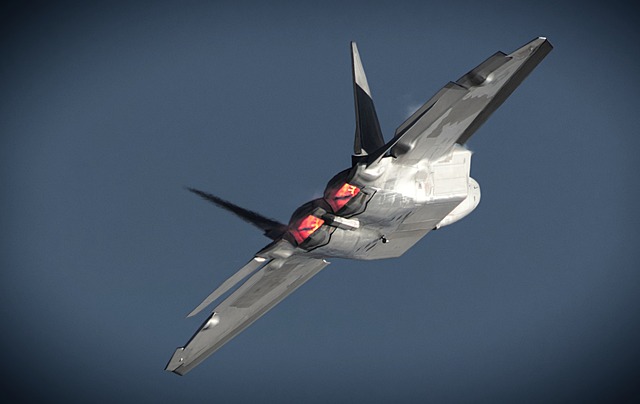How Fast is Mach 10
How Fast is Mach 10: understanding the concept, delving into real-world examples, and uncovering the challenges and potential of hypersonic flight. Discover authentic resources to learn more about this fascinating topic.
Mach 10 is a speed that is 10 times the speed of sound. At sea level and room temperature, Mach 10 is approximately 12,636 kilometers per hour (km/h) or 7,857 miles per hour (mph).
To give further context, at Mach 10, an object would be moving incredibly fast. It’s more than 12 times the speed of a typical commercial jetliner and significantly faster than most missiles or aircraft designed for supersonic flight.
Understanding the Speed of Sound
Before diving into the realm of Mach 10, it’s crucial to comprehend the speed of sound. The speed of sound varies with temperature, altitude, and humidity, but at sea level and room temperature, it’s approximately 767 miles per hour (1,235 kilometers per hour). This speed is commonly referred to as Mach 1.
What is Mach Speed?: How Fast Is Mach 10

Mach speed is a measurement used to describe the speed of an object about the speed of sound in the surrounding medium. It is named after Ernst Mach, an Austrian physicist and philosopher who made significant contributions to the study of supersonic motion.
When an object travels at Mach 1, it is moving at the speed of sound in that particular medium. The speed of sound varies based on factors such as altitude, temperature, and the medium itself (like air or water). For example, at sea level and around 20 degrees Celsius (68 degrees Fahrenheit), the speed of sound in dry air is roughly 1,225 kilometers per hour (761 mph).
So, when something travels at Mach 2, it’s moving at twice the speed of sound, and at Mach 3, three times the speed of sound, and so on. Mach speed is a way to express an object’s velocity with the speed at which sound waves travel through a specific medium.
The Phenomenon of Mach 10
The phenomenon of Mach 10 refers to the speed that is ten times the speed of sound. At Mach 10, an object is traveling incredibly fast, reaching velocities approximately equal to 12,250 kilometers per hour (about 7,610 miles per hour) under typical conditions (such as at sea level with a temperature of around 15 degrees Celsius or 59 degrees Fahrenheit).
Objects moving at Mach 10 are considered to be hypersonic, meaning they surpass the speed of sound by a substantial margin. This speed is utilized in various fields, including military technology, space exploration, and experimental aeronautics. Achieving Mach 10 or higher speeds poses significant engineering challenges due to extreme temperatures, aerodynamic forces, and material constraints experienced at such velocities.
Maverick and Top Gun 2
In the cinematic world of Top Gun 2, Maverick is set to push the boundaries of speed and aviation. The movie’s plot revolves around hypersonic technology, and Maverick is expected to reach Mach 10 in the film. This adds a thrilling dimension to the Top Gun franchise, as it delves into the world of hypersonic flight.
How Fast is Mach 10?
“Mach 10 is approximately 7,672 miles per hour (12,348 kilometers per hour) at room temperature and sea level. This is equivalent to 12,347 kilometers per hour, 11,252 feet per second, or 3,430 meters per second. Expressed another way, Mach 10 is 10 times the speed of sound. Remember that these are approximate values dependent on local atmospheric conditions.”
Beyond the Speed of Sound: Exploring the Hypersonic Frontier
While achieving Mach 10 for passenger jets remains a distant dream, the realm of hypersonic flight is actively being explored. This category encompasses speeds exceeding Mach 5, pushing the boundaries of aerodynamics and propulsion systems. Here are some key examples:
- NASA’s X-43A Scramjet: This experimental aircraft holds the record for the fastest air-breathing hypersonic flight, reaching speeds of Mach 10 in 2004, demonstrating the potential of scramjet technology. (https://www.nasa.gov/image-article/x-43a-hyper-x/)
- Military Hypersonic Programs: Several countries, including the United States, China, and Russia, are developing hypersonic missiles capable of exceeding Mach 5. These weapons offer advantages like unmatched speed and maneuverability, posing significant strategic implications. (https://www.cfr.org/podcasts/hyperventilating-over-hypersonics)
The Immense Challenges of Reaching Mach 10
Despite the allure of hypersonic flight, achieving Mach 10 presents formidable challenges:
- Aerodynamic Heating: Friction at such high speeds creates extreme heat, exceeding 3,000 degrees Fahrenheit. This necessitates the development of advanced heat-resistant materials that can withstand these scorching temperatures without compromising the vehicle’s structure. (https://www.nasa.gov/wp-content/uploads/2023/04/sp-4232.pdf)
- Engine Technology: Current jet engines struggle to function efficiently at hypersonic speeds. Scramjets, a type of ramjet engine that utilizes supersonic airflow for combustion, offer a potential solution. However, scramjet technology remains in its early stages of development, requiring further research and refinement. (https://www.grc.nasa.gov/www/k-12/airplane/scramjet.html)
- G-Forces: The immense acceleration required to reach Mach 10 would exert tremendous G-forces, exceeding human tolerance. This presents a significant hurdle for manned hypersonic flight, as the human body can only withstand a limited amount of G-force before experiencing potentially debilitating physiological effects. (https://www.nasa.gov/)
The Global Race for Hypersonic Supremacy: A Glimpse into the Competition
The race for hypersonic flight is heating up, with various nations and private companies vying for technological dominance:
- China: China has actively tested hypersonic gliders and missiles, showcasing significant progress in developing this technology. Their advancements raise concerns about potential military applications and the need for international cooperation to ensure responsible development and use of hypersonic weapons. (https://www.nytimes.com/2024/02/04/world/asia/china-nuclear-missiles.html)
- United States: The US military and private companies are heavily invested in hypersonic research, aiming to maintain technological leadership. Several programs are underway, focusing on developing hypersonic vehicles for various applications, including national defense and potentially future high-speed transportation. (https://www.washingtonpost.com/national-security/2022/07/19/hypersonic-missile-pentagon-china-russia/)
Could The Human Body Survive Mach 10?

The idea of traveling at Mach 10, a speed roughly equivalent to 7,672 miles per hour or 12,348 kilometers per hour, raises a critical question: could the human body survive such extreme velocities? To understand the implications of traveling at this incredible speed, we need to delve into the challenges and limitations that arise.
At Mach 10, an object experiences intense aerodynamic forces and extreme temperatures due to the friction generated by rapidly moving through the Earth’s atmosphere. These factors pose significant risks to the human body. Let’s break down the challenges:
- G-Forces: When an object accelerates to high speeds, it experiences G-forces. The acceleration at Mach 10 can subject the human body to extreme G-forces, potentially causing loss of consciousness, injury, or even death. Astronauts, for instance, undergo rigorous training to withstand G-forces, and they wear specialized suits to mitigate their effects. Traveling at Mach 10 would require advanced life support systems to ensure the survival of a human passenger.
- Temperature: As an object travels at such high speeds, it generates tremendous heat due to air resistance. The temperatures experienced at Mach 10 are far beyond what the human body can endure without advanced protection. Specialized heat-resistant materials and cooling systems would be necessary to prevent heat-related injuries to passengers.
- Structural Integrity: The body itself would face challenges related to structural integrity. The rapid changes in pressure and temperature can be harmful. Blood circulation, respiration, and bodily functions could be severely affected.
- Radiation: At these speeds, passengers would also be exposed to higher levels of cosmic radiation, which is typically shielded against conventional air travel. Prolonged exposure to such radiation can have detrimental health effects.
- Inertia: The body’s inertia, or resistance to changes in motion, can also pose problems. Rapid acceleration and deceleration at Mach 10 could cause physical harm, much like the effects of G-forces.
- Respiratory Challenges: The air at Mach 10 is extremely thin, and oxygen levels are significantly lower. Passengers would require a controlled environment with a constant supply of oxygen to breathe.
Achieving Mach 10: How Fast Is Mach 10
Reaching Mach 10 poses significant challenges. Hypersonic vehicles must withstand extreme temperatures and pressures. These vehicles often use scramjet engines, which operate efficiently at high speeds. The development of materials capable of withstanding the intense heat generated at Mach 10 is essential for successful hypersonic flight.
The Challenges of Hypersonic Flight
Hypersonic flight introduces unique challenges, including aerodynamic forces, engine performance, and structural integrity. Overcoming these challenges is imperative for safe and efficient travel at Mach 10.
Advancements in Hypersonic Technology
Recent years have witnessed substantial advancements in hypersonic technology. Various nations and organizations are investing in research and development to make hypersonic flight a reality. These innovations are not limited to military applications; they also hold promise for space exploration and commercial travel.
Military Applications
Hypersonic technology has garnered significant attention from military forces worldwide. The ability to reach Mach 10 and beyond can revolutionize missile defense systems, reconnaissance, and rapid deployment of troops. It also presents challenges to existing defense mechanisms.
The Future of Hypersonic Travel
The future of hypersonic travel is exciting, with potential applications ranging from ultra-fast commercial flights to space exploration. While challenges remain, continued research and development are likely to make Mach 10 travel more accessible in the coming years.
Safety Concerns
Despite the promise of hypersonic technology, safety remains a paramount concern. Ensuring the reliability and safety of hypersonic vehicles is crucial to preventing accidents and disasters at these extreme speeds.
FAQs: How Fast Is Mach 10

Here are some of the most common questions regarding Mach 10:
- Can passenger jets ever reach Mach 10?
- With current technology, it’s highly unlikely. The immense challenges of hypersonic flight, primarily related to heat management, engine efficiency, and G-forces, make it impractical and potentially unsafe
for commercial air travel. However, the future holds possibilities, as technological advancements may pave the way for overcoming these hurdles.
- What are the potential applications of Mach 10 flight?
- While passenger travel remains a distant prospect, hypersonic technology holds several potential applications:
- Military: Hypersonic missiles offer unmatched speed and maneuverability, potentially revolutionizing warfare strategies. However, ethical considerations and international cooperation are crucial for responsible development and use of these weapons.
- Point-to-point transportation: For critical cargo or personnel transport requiring extreme speed, hypersonic technology could significantly reduce travel times. This could have applications in emergency response, high-value cargo transportation, or even future space travel.
- Scientific research: Hypersonic vehicles could be used for scientific research, enabling us to study atmospheric phenomena at high altitudes and potentially even explore other celestial bodies more efficiently.

Conclusion: How Fast Is Mach 10
Mach 10 refers to a speed that is ten times the speed of sound in a particular medium, commonly understood as approximately 7,673 miles per hour or 12,345 kilometers per hour in Earth’s atmosphere. Achieving Mach 10 involves incredible velocity and is considered a significant milestone in aeronautics and aerospace technology.
This speed is crucial in various fields, from military applications to space exploration. Understanding the concept of Mach 10 involves grasping its impact on aviation, space travel, and the development of hypersonic technology.
The pursuit of Mach 10 involves overcoming numerous challenges, including the design of vehicles capable of handling such extreme velocities and managing the intense heat generated at hypersonic speeds.
Overall, comprehending “How Fast Is Mach 10” encompasses exploring the realms of high-speed science, technology, and its broader implications for the future of transportation, defense, and space exploration.
Authentic Resources:
- National Aeronautics and Space Administration (NASA): https://www.nasa.gov/
- Council on Foreign Relations: https://www.cfr.org/
- The New York Times: https://www.nytimes.com/
- The Washington Post: https://www.washingtonpost.com/




